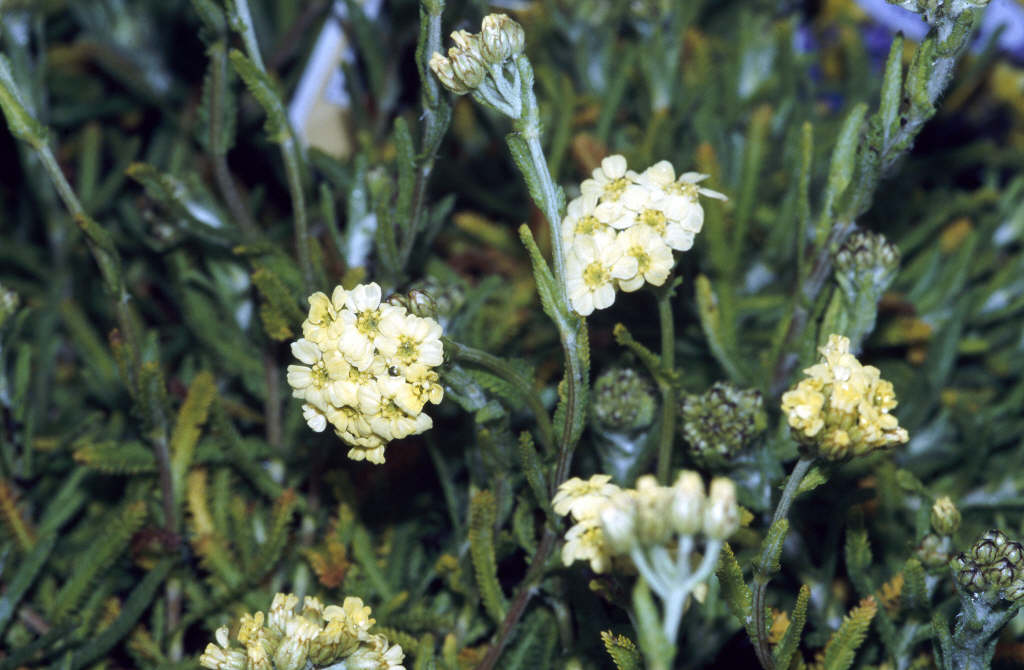Achillea × lewisii 'King Edward'

yarrow 'King Edward'
A compact, spreading perennial to 10cm in height, with narrow, silvery-grey leaves which often persist through the winter. Compact heads of small, buff-yellow flowers in early summer, fading to cream with age

Buy this plant
Size
Ultimate height
Up to 10cmTime to ultimate height
2–5 yearsUltimate spread
0.1–0.5 metresGrowing conditions
Moisture
Well–drainedpH
Alkaline, NeutralColour & scent
| Stem | Flower | Foliage | Fruit | |
| Spring | Grey Silver | |||
|---|---|---|---|---|
| Summer | Cream Yellow | Grey Silver | ||
| Autumn | Grey Silver | |||
| Winter | Grey Silver |
Position
- Full sun
Aspect
South–facing or West–facing or East–facing
Exposure
Exposed or Sheltered Hardiness
H5Botanical details
- Family
- Asteraceae
- Native to GB / Ireland
- No
- Foliage
- Semi evergreen
- Habit
- Matforming
- Genus
Achillea can be mat-forming or upright perennials, mostly herbaceous, with sometimes aromatic, pinnately divided or simple and toothed leaves and flattened clusters of small, daisy-like flower-heads
- Name status
Accepted
How to grow
Cultivation
Grows best in moist but well-drained soil although will tolerate a wide range of conditions. Deadhead after flowering
Propagation
Propagate by division in spring
Suggested planting locations and garden types
- Coastal
- Cottage and informal garden
- Gravel garden
- Wildlife gardens
- City and courtyard gardens
- Patio and container plants
- Prairie planting
- Cut flowers
Pruning
Cut back untidy foliage in spring
Pests
May be susceptible to aphids
Diseases
May be susceptible to powdery mildews
Get involved
The Royal Horticultural Society is the UK’s leading gardening charity. We aim to enrich everyone’s life through plants, and make the UK a greener and more beautiful place.